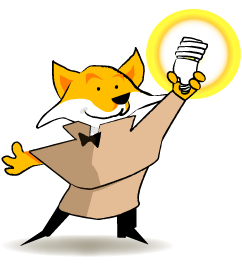Lesson 6: People Have the Power!
Electricity Generation
Overview
Where does electricity that is used to light our homes, schools, and businesses come from? In this lesson, students investigate how electricity is generated on a wide scale basis. The major components of electric production: the turbine, the generator, and energy source are introduced in this lesson.
Key Ideas
- Electricity can be generated using a variety of energy sources.
- Presently, the majority of electricity generated uses some of the same methods that have been used for over 100 years.
- Electricity generation most commonly involves a turbine and generator.
- Some energy sources are renewable and some energy sources are nonrenewable.
Lesson Goals
Students will:
- explore how electricity is generated.
- investigate several energy sources used in the generation of electricity.
- consider why different energy sources are used in the generation of electricity.
- be introduced to the idea that some energy sources are renewable and some energy sources are nonrenewable.
Lesson Resources
Download Lesson Plan (11 pages, 460 KB)
 Power Point Picture Set of Power Generation Methods (9776 KB)
Power Point Picture Set of Power Generation Methods (9776 KB)
![]() Keynote Picture Set of Power Generation Methods (7.2 MB)
Keynote Picture Set of Power Generation Methods (7.2 MB)
 Class PowerSleuth Power Puzzles
Class PowerSleuth Power Puzzles
Download puzzle sets with or without lines and/or individual puzzle pieces.
(Puzzles without lines could be used as posters as well.)
![]() Teacher Resource 6.1: PuzzlesWithLines.zip
Teacher Resource 6.1: PuzzlesWithLines.zip
Teacher Resource 6.1: PuzzlesWithoutLines.zip
Teacher Resource 6.3: Class Puzzle Pieces.zip
 Teacher Resource 6.2: Puzzle Descriptions
Teacher Resource 6.2: Puzzle Descriptions
Go on a Virtual Power Plant Tour
Online Resources
Take a virtual walk through a hydroelectric power plant
A collection of videos that includes segments on how electricity is generated from various sources.
Learn more about how electricity is generated, renewable and nonrenewable energy sources, and the importance of conservation and using energy efficiently by selecting "You've Got the Power" from the Energy Quest's movie menu. (Approximately 12 minutes)
Article from Science News for Kids: "Weaving with Light" describes how native Huichol people live much the way their ancestors did—without electricity until the development of light-producing textiles.
Debate the pros and cons of the historic "Flooding of Flagstaff, Maine."
My Light by Molly Bang companion website
Connection to Maine Agencies
MEEP (Maine Energy Education Program) has a Great Energy Debate Game (4th to 12th grade). In this debate, students take on the real world challenge of convincing others that one energy source is the best.
MEEP also has a Coal-fired Power Plant Activity. Students learn how electricity is made in a power plant and discuss the pros and cons of using coal. They then discover alternative ways to spin a turbine to run a generator. A MEEP representative and will come to interested schools, free of charge, to guide either of these activities.
For schools in Aroostook County, a Maine Public Service (MPS) representative will come to interested schools, free of charge, to guide and support concepts developed in this lesson.


